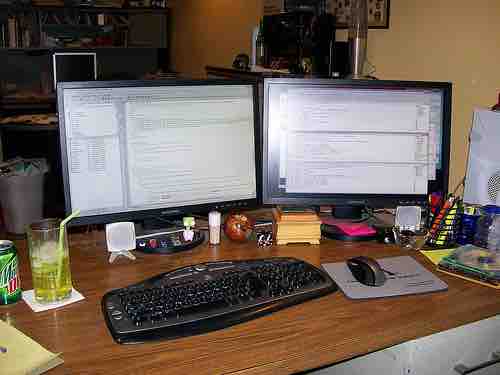Introduction
Facilities is defined as the workspace and equipment needed to carry out the operations of the organization. This includes offices, factories, computers, and trucks.
The location, design, and layout of an organizations' facilities are central to maximising the efficiency of the overall operations system.
In this unit, we're going to focus on facility design and layout.
Facilities Design and Layout
After choosing the facility's location, the next stage in operations planning is to design the best physical layout for the facility. The avaliable space needs to be assessed with workstations, equipment, storage, and other amenities need to be arranged. The aim is to allow for the most efficient workflow without disruption. A workplace that has carefully arranged its layout will allow for a more effictive and efficient workflow and produce its good or services to a high standard.
There are three types of workflow layouts that managers can choose from:
- Process layout: arranged in departments (e.g., hospitals).
- Product layout: production line (e.g., a car assembly plant).
- Fixed-position layout: building a large item (e.g., jumbo jet).
Facility Layout Considerations
Facility managers should consider several factors when designing the layout of a facility to achieve maximum effectiveness.
- Does the design and layout allow for growth or change? Is there a chance that your company will experience significant growth? Could some other change come about that could influence the layout of your facility? In business, anything is possible. Make sure that same is true of your facilities layout. While making changes is a costly and undertaking them shouldn't be taken lightly, your layout should be flexible enough to allow a redesign if the situation calls for it.
- Is the process flow smooth? If you are running a factory, for example, the flow should be such that the raw materials enter at one end and the finished product exits at the other. The flow doesn't have to form a straight line, but there should be no backtracking. Backtracking creates confusion. Employees get confused ("Has that been done yet? "), parts get lost, and coordination is very difficult. You need to have a smooth process to be efficient.
- Are materials being handled efficiently? Here simplicity is best.
- Does the facility layout aid the business in meeting its production needs? Is there enough space and is it used efficiently? Have you allowed enough space for shipping and receiving? Can different areas of the business communicate effectively? Does the layout lend itself to promotional activities? (e.g., showing the facilites to potential customers)
- Does the layout contribute to employee satisfaction and moral? Numerous studies have linked employee moral to productivity. So managers should take this point into consideration when designing the layout of their facilities. How can this be done? Paint the walls light colors, allow for windows and space, include a cafeteria and a gym. Some of the options may cost lots of money, but if it increases productivity in the long run, it is probably worth making the investment.
Are the Facilities for an Office or a Factory?

Office Space
An office will have different layout requirements than a factory.
Office and factory facilities are approached differently.
Factories move materials from point A to point B to produce a final products. The process uses equipment and utilities. Minimizing transportation costs may be one of the criteria of planning the layout of a factory. Another important consideration for factories in the necessity for maintenance of machinery. As such, careful consideration of enabling access to technicians is critical to ensuring minimal workflow disruptions in a scenario of updating, repairing or replacing machinery.
Offices, on the other hand, produces information. The form may be physical, electronic, or oral, but the the final result is still information. Office facility layout is harder to quantify than factory facilities layout, but the goal should be to minimize communication costs and maximize productivity.
Your industry can also influence the facilities layout design. The facility layout for service industries will differ from that of retailers and manufacturers. It all depends on organization's needs.